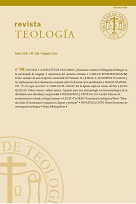El estatuto y las implicaciones de la declaración conjunta sobre la doctrina de la justificación
Keywords:
Joint Declaration on the Doctrine of Justification, the hermeneutic of the confessional texts, bilateral dialogues, Lutheran – Roman Catholic dialogue.Abstract
In the context of the reformed – catholic theological dialogue, the author
explores some answers, from a catholic perspective, to the different questions
regarding the Joint Declaration on the Doctrine of Justification (JDDJ)
addressed fromthe protestant side: a)What normative-canonical value does the
Catholic Church attribute to the JDDJ?; b) Does the doctrine proposed in the
JDDJ represent a real change in Catholic teaching or is it merely a rereading of
the Catholic Church’s own Tradition?; c)How does one harmonize the doctrinal
authority of the JDDJ with the teachings of previous magisterial documents,
and concretely, with the teachings of the Council of Trent?; d)Has what
the JDDJ affirmed been unanimously accepted by theCatholicChurch?Or, on
the contrary, is its authority relativized by the fact that in theological circles
some authoritative voices have questioned the method employed and the
resulting text that was signed? And, finally, concerning the ecclesiological
implications of the JDDJ: e) Does the fact that a fundamental consensus has
been reached regarding the doctrine of justification signify a step forward for
the Catholic Church along the path of a full recognition of the ecclesiality of
the Lutheran churches?; f) Would not the ecclesial fragmentation resulting
from the division among Christians affect all churches equally, in such a way
that all them would find themselves in a defective situation?
Downloads
Downloads
Published
How to Cite
Issue
Section
License














 Teología
Teología